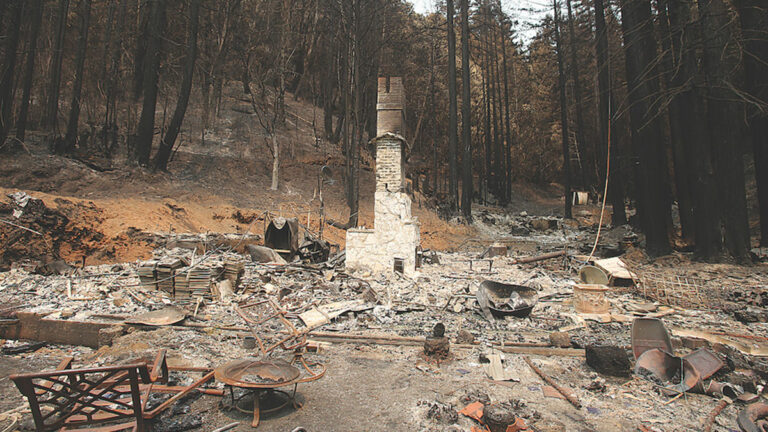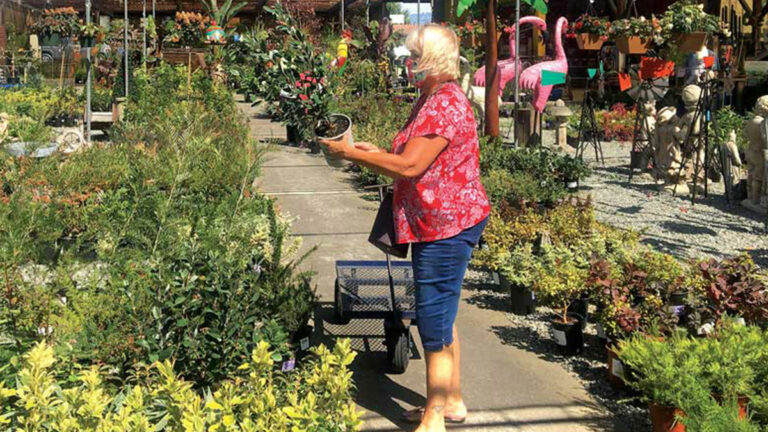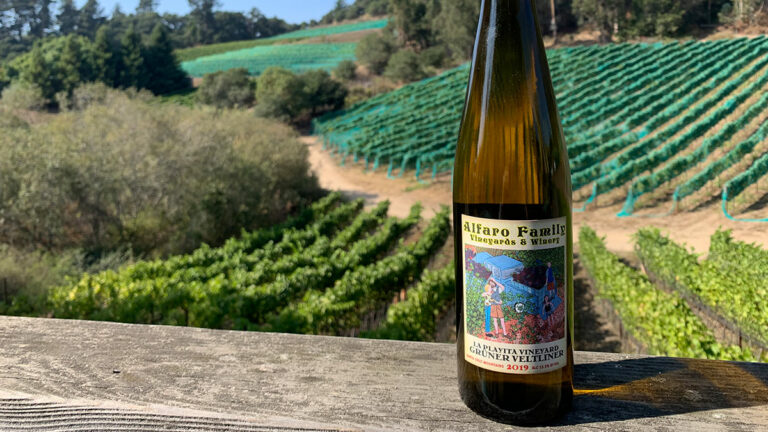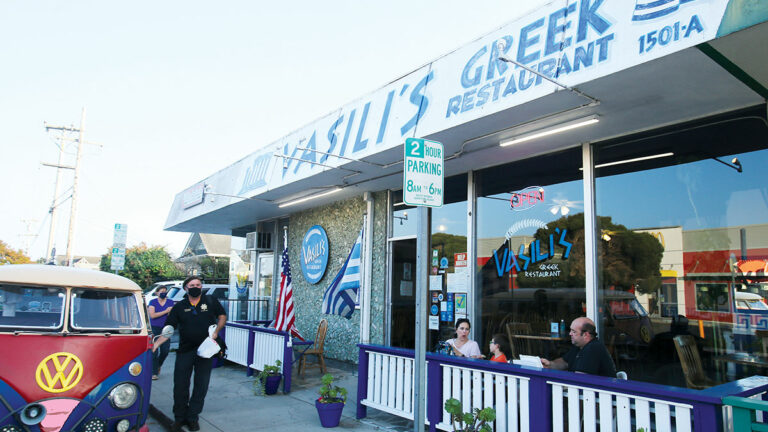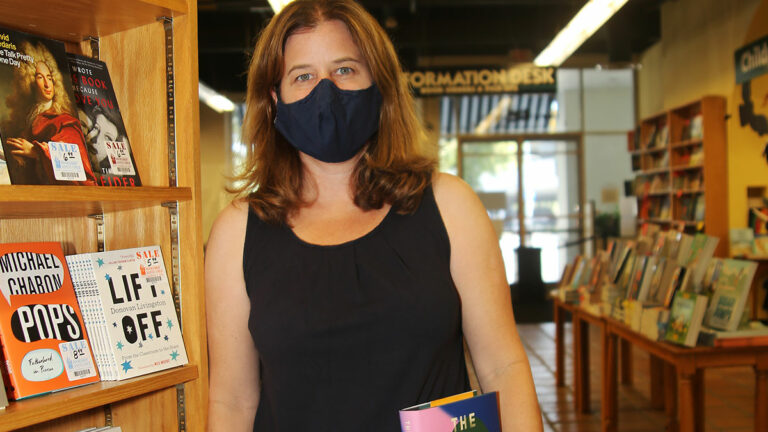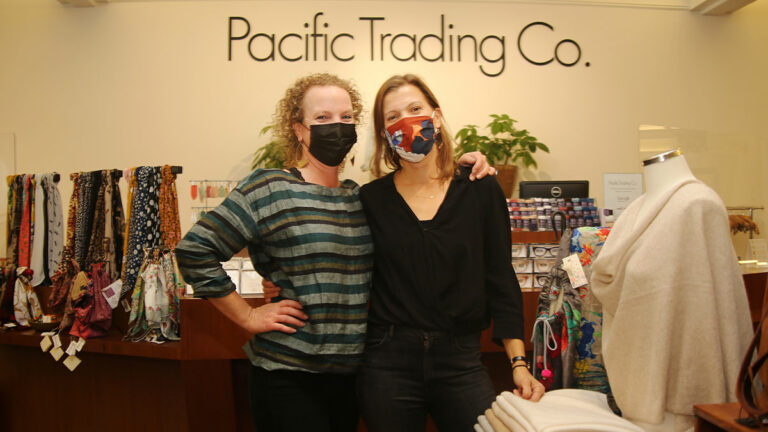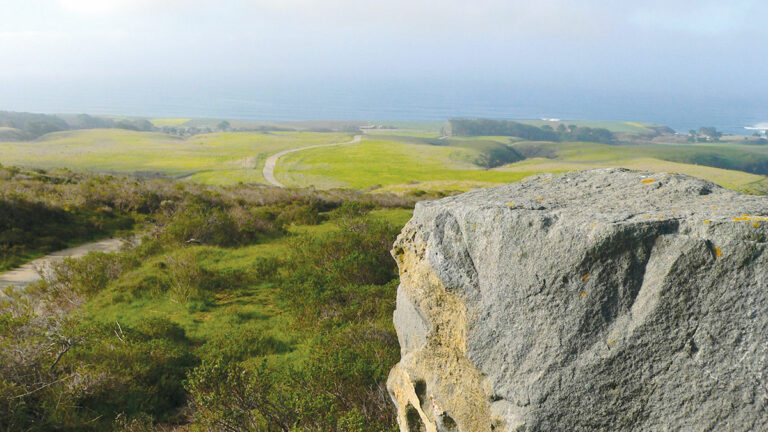Like a well-crafted but shameless disaster movie, 2020 has unfolded in ways that are, paradoxically, both predictable and shocking.
In Santa Cruz County, a tragic once-in-a-century wildfire has met a crippling once-in-a-century pandemic, both playing out on the national level against a painful racial reckoning and unprecedented political chaos. Cue the boils and locusts.
“This year is like one of those movies that is so bad that you don’t believe the writers kept adding things to it. Like, oh come on, that wouldn’t really happen!”
That assessment comes from Anandi Heinrich, a partner of the family-owned retailer Pacific Trading Company, a mainstay in downtown Santa Cruz since the 1980s. As the smoke clears (both figuratively and literally) from 2020’s latest plot twists and as Covid-19’s third act is poised to unfold, Heinrich and other small business owners—across the county and the country—are at a potentially dangerous inflection point. There is a palpable sense among small businesses that the autumn could be a bumpy ride indeed, and not everyone will still be standing at year’s end.
Brandon Napoli is the director of the Santa Cruz Small Business Development Center (SBDC), and he’s in more-or-less constant conversation with local business owners about today’s daunting economic environment. He says that businesses are “feeling dazed and confused. [The fall] may be kind of a last stand. They’re either optimistic that they’ll get good numbers during the holidays to get them to 2021, or they’re tired and they want to throw in the towel.”
Casey Coonerty Protti, owner/operator of Bookshop Santa Cruz, admits that she did not inherit the plucky Irish optimism of her dad, Bookshop’s longtime owner Neal Coonerty. “I’m a worst-case-scenario personality,” she says. But what is better to heed in this tumultuous year than the worst-case scenario?
“I truly believe,” says Protti, “that unless something happens, we’re going to see the demise of half of local businesses by the end of the year. I’m hoping I’m wrong about this. But I’m truly concerned.”
The situation for small independent businesses is starkly different now than it was six months ago, when the pandemic first hit. Then, businesses had a lot of work in front of them in adapting to delivery or curbside-pickup, downsizing staff, and marshaling the energy and creativity to stay afloat. They also had the benefit of wide public sympathy and, even more crucially, direct government aid in the form of emergency loans.
But the federal Paycheck Protection Program—which paid out about a half-trillion dollars in loans and doubtlessly kept thousands of businesses from failing—expired a month ago, and Congress has yet to act on any kind of second wave of aid. Even if Congress does provide a new round of loans, many businesses are worried they may not meet PPP’s regulations for loan forgiveness, and would be reluctant to add more debt. Many are facing balloon payments on deferred rent, and mostly, they’ve already opted for the low-hanging fruit of cutbacks and adaptations.
On top of that, the fall means a return of the traditional cold and flu season, creating a kind of “twin-demic” with still rampaging Covid-19. Political unrest and election anxiety provide frightening possibilities for more disasters. And … oh yeah, fire.
Many Santa Cruz business owners I’ve spoken to are reluctant to sound the alarm on what they’re facing, sensitive to their many friends and neighbors who need more immediate help in the wake of the devastating CZU Lightning Complex fire, as well as so many others in the community dealing with the health effects of Covid-19, unemployment and financial uncertainty, and even the stresses of teaching their kids at home now that the school year is back.
On the record, they prefer to be “cautiously optimistic,” but the concern is palpable that local businesses may be facing an existential crisis not seen since the 1989 Loma Prieta Earthquake. That’s not to say that the optimism isn’t real. It’s just easier and more socially acceptable to express than the dread.
Collette Tabone, the executive director of the Santa Cruz nonprofit dance studio Motion Pacific, has been feeling the squeeze from both sides. She was already struggling to keep her dance studio in business in a period where she could not hold in-person dance classes. In August, she also lost her home near Big Basin in the fire.
“There’s a part of me that’s hurting and crying and feeling the pain that so many in Santa Cruz County are feeling,” she says. “And there are days when I feel pessimistic. But never have I been more ready to dance, and to move, and to be part of a community. I really do believe in this community. I’ve seen it pull together.”
WORST YET TO COME?
Still, the consensus is that much of the pain to the business community is yet to come. Since the shutdown, Santa Cruz has lost dozens of businesses. Downtown alone has absorbed the loss of the Poet and the Patriot, 99 Bottles, O My Sole, Pono Hawaiian Grill, Nourish, True Olive Connection and others, and has lost franchises of Starbucks and Walgreens. Businesses report revenues down anywhere from 20-60% (and even lower after the fire).
In a way, says Napoli of the SBDC, Covid-19 didn’t create the crisis for small businesses. It only exacerbated the problems that were already there.
“The bigger tsunami is this constant move toward ecommerce,” he says, citing statistics that show consumer spending has not dipped during 2020 even though businesses’ revenues have. “There is still the purchasing power within this county to keep small businesses going. But there needs to be a conscious effort not to isolate [spending at local businesses] on some ‘Small Business Saturday’ between Black Friday and Cyber Monday. I would plead with community members to go to small businesses first.”
Of course, ecommerce can benefit local small businesses as well. Kamala Allison opened up her apparel store Fybr in Santa Cruz in 2018. She had to close her store for several weeks before a reopening in May with Covid-19 protocols in place. Before the shutdown, Fybr, as a new business getting established, was growing at about 16% annually. Since the shutdown, revenues have fallen at her store by 50%.
But Allison decided to use her time boosting the store’s ecommerce presence (shopfybr.com) and, as a result, she’s considering re-orienting her business model. “I’ve always thought of ecommerce as a supplement to our brick-and-mortar business. But now I’m kind of thinking of flipping that around.” She’s confident she can make it through the first post-Covid holiday season, but next spring the lease on her Pacific Avenue business is up. “If things haven’t turned around, if it feels like things are worse than they are now, I would seriously have to weigh whether to renew the lease.”
FIGHTING FEAR
Other businesses are teetering not so much because of Covid-19, they say, but because of reactions to it. Roxann Burdick and her husband Jason run the Stranded Beauty Bar hair salon in the Seabright neighborhood of Santa Cruz. Like many salons, Stranded was closed completely, allowed to reopen, and forced to close again, but reopening yet again at the end of August. This whipsawing of opening and closing has met what Burdick believes in an unjustified fear of salons in general to create a crisis in her business.
“People don’t understand,” says Burdick. “In a salon, we spend hundreds and hundreds of hours learning how to safeguard people from communicable diseases. We’ve been trained for this exact moment.”
Jason Burdick’s family lost their Santa Cruz business—Burdick’s Television and Appliance—after Loma Prieta. Roxann is terrified that history is going to repeat itself. “This whole thing has devastated us,” she says. “I can count the days I haven’t cried.”
Other businesses depend on bringing people together for activities or performances, and they’ve been in limbo for six months. The Kuumbwa Jazz Center, for decades a crossroads and hub for live performances of all kinds, was celebrating its 45th year in business when it was closed indefinitely. The club’s executive director Bobbi Todaro said that Kuumbwa is adapting by turning their space into a kind of performance studio after purchasing top-of-the-line video equipment to produce live shows available online as “Mondays at Kuumbwa.” The online shows are popular and free for anyone to access, but they are not bringing in revenue. Kuumbwa stays in business not only from ticket sales to its live shows, but with revenues from its café, its beverage bar, and its gift shop, all of which are suspended.
Todaro says that Kuumbwa will continue to rely on its donor base to keep it alive. “We will be asking them, during this difficult time, to let us see what the next 45 years will bring.”
Pre-Covid, Motion Pacific was hosting about 20 dance classes for adults per week, and about as many for kids. The studio has pivoted to online dance classes with limited success, and retrofitted its space for teachers to use as a kind of Zoom room for their classes. The experience of dancing with others in the same room, as well as Motion Pacific’s habit of encouraging drop-in attendance, is gone. Enthusiasm is difficult to inspire, and revenues are down more than 50%.
“It’s very difficult to get students interested in taking online classes,” says Tabone. “The younger generation is just tapped out on their screen time. Never thought I’d say that.”
The Museum of Art and History has been having to contemplate exactly what a museum is without the use of its building. The MAH’s stately downtown three-story building has been closed since the earliest days of the shutdown.
“We had great hopes in mid-summer that we might be able to open after Labor Day,” says MAH’s executive director Robb Woulfe. “Then all of the rollbacks started happening and now, we are hopeful we can open in early 2021.”
In the meantime, the MAH has opened an online-only exhibit called “Queer Santa Cruz” and this month debuted an outdoors exhibit of mural artist Irene Juarez O’Connell. It’s also worked to help the seven vendors in Abbott Square stay open.
“We can’t let people think that we’re closed in the sense that we’re not doing business,” says Woulfe. “We still need to offer something for our community.”
A big role for the MAH and Abbott Square is to serve as a driver to get people to populate downtown Santa Cruz. Predictably, downtown crowds have been atypical this year. Retailers report that the number of visitors from other states and other countries has plummeted, so the tourist season has depended on regional visitors. In the fall, that tourist traffic is expected to decline. Another enormous factor is the absence of students and faculty at UCSC, denying local businesses a steady base of customers, even those that don’t depend directly on students.
“We don’t get many students,” says Anandi Heinrich of Pacific Trading, “but during moving-in week or family week, the mothers of students generally love our store.”
SHOPPING SEASONS
Though many hesitate to say so explicitly, the message that downtown businesses uniformly want to convey is that they need the community’s financial support now more than ever. There are discussions among downtown businesses to promote an earlier holiday season, not only to give businesses immediate help this fall, but to avoid the typical crowds that businesses will not be able to accommodate with Covid-19 protocols in place in November and December.
“I think it’s going to be a hard road,” says Heinrich. “People seem tired and on edge. People are having a hard time. Even if they are not directly affected, there is still so much anxiety and worry and loneliness. But I think maybe people take it for granted that all these little mom-and-pop businesses and this downtown environment that they love will be here when this is all over. But without community support, a lot of us just won’t be. People don’t realize how important something is until it’s gone.”
Despite her apprehensions, Casey Coonerty Protti has seen how the community has kept Bookshop aloft her entire lifetime. “I do truly believe that if any community can figure this out and rally around businesses, it’s this community. They always have. There’s never been a time when they haven’t shown up.”
Like thousands of others in Santa Cruz County, Brandon Napoli of the SBDC was forced to evacuate from his home during the fire. He is keenly aware that locals have a lot to deal with in this year of compound disasters. Still, he is keen to sound the alarm for local businesses, stressing how hard they are working to manage unpredictability.
“If I told you that you had to run a race today, but I didn’t tell you if it was a 5K or a marathon, what pace would you set for yourself?” he says. “What if I at the last minute made it an obstacle race and didn’t tell you what the obstacles are?”
Napoli says that many local businesses are facing extinction. “This is the hardest period in these businesses’ lives. The wallet is the ballot box. I think everyone in this community needs to do a self-check and (ask themselves) what makes the most impact for them to provide for their community at this point. It’s unprecedented what we’re facing.”
“We directly need the support of the community,” says Heinrich. “It’s not enough for someone to say, ‘Oh, I like that restaurant or I like that store.’ It’s really about coming down and giving your actual support. That’s the only way we’ll have something left after Covid.”


